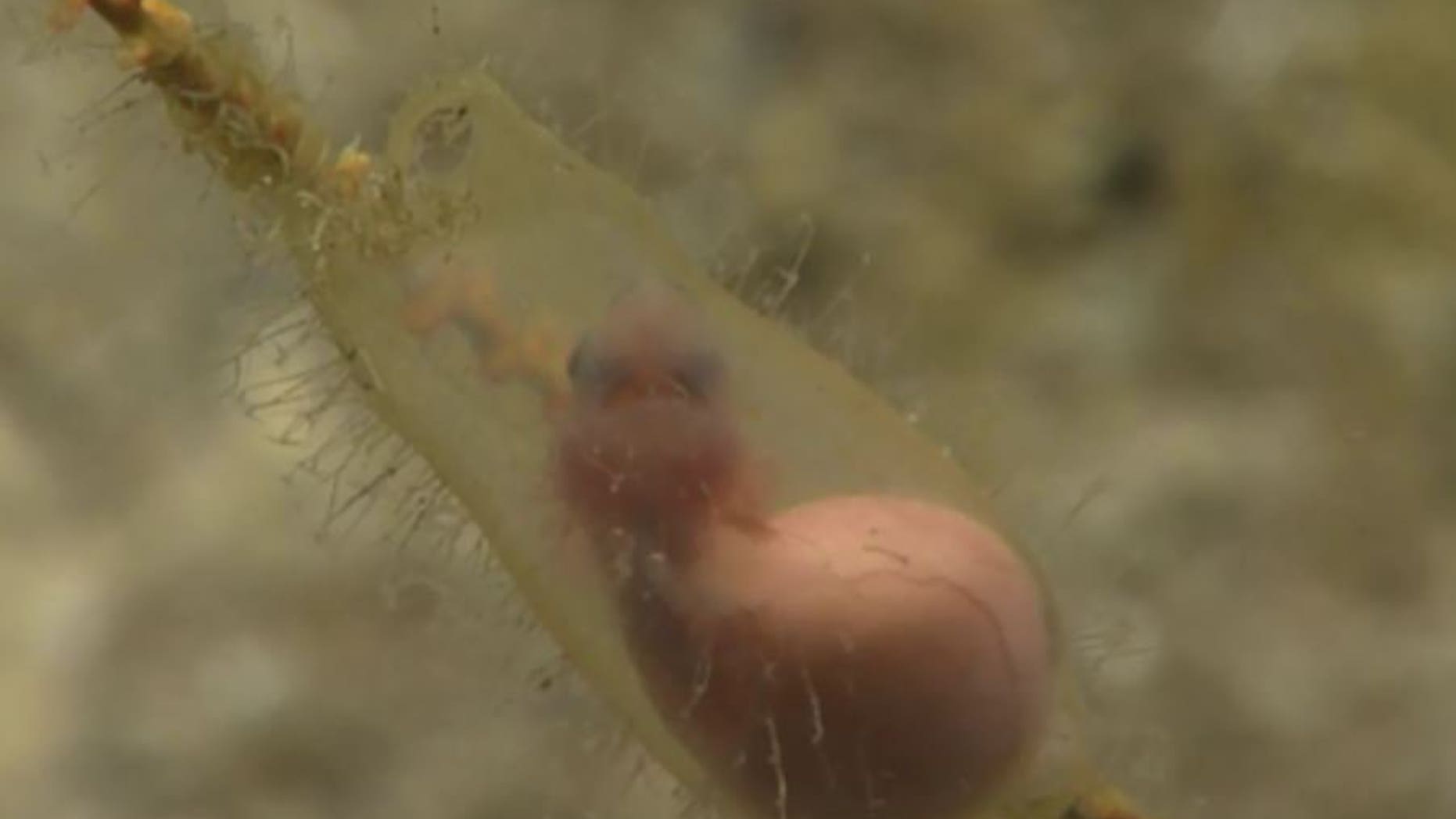
Scientists captured footage of a live shark embryo off the coast of Puerto Rico.
(NOAA Office of Ocean Exploration and Research, Exploring Deep-sea Habitats off Puerto Rico and the U.S. Virgin Islands)
Using a camera to explore the ocean floor — roughly 820 to 1,200 feet below the surface — off the coast of Puerto Rico last week, National Oceanic and Atmospheric Administration (NOAA) scientists got a rare opportunity to observe something they hardly see: a live shark embryo.
During the deep sea journey, researchers witnessed 12 different kinds of fish, from bigeye soldierfish to silk snappers with its remotely operated vehicle Deep Discoverer, the NOAA said in a news release. They also witnessed an array of colorful coral and sponges along Desecheo Island.
But it was a tiny translucent egg case floating nearby that really caught their eye.
"Upon zooming in on this egg case, we were able to clearly see the embryo of a catshark actively swimming within the case," the NOAA described, noting it was attached to a coral branch at the time.
It's a "very rare sighting," as only about 30 percent of shark species actually lay eggs, according to LiveScience. Catsharks, in particular, are also rarely observed since they prefer to hang around depths of anywhere between 1,600 to 2,000 feet, National Geographic reports.
They're the largest shark family, with more than 100 species of the small sharks, which grow up to about 3 feet long.
GREAT WHITE SHARK KILLS DOLPHIN, LOSES MEAL TO EVEN BIGGER SHARK
"Most catsharks live in seas above the upper continental slope, a location that makes it difficult to observe these sharks and collect specimens. Therefore, much information about catsharks remains to be discovered," AnimalDiversity.org reports.
Cat Gordon, a conservation officer at U.K.-based organization Shark Trust, believes the embryo could be anywhere from four to five months old.
"The shark moves backwards and forwards to bring in oxygenated seawater through small slits along the edge of the egg cases and it will also open and close its mouth to pump water over the gills," Gordon told the Daily Mail.
"Egg cases are attached to invertebrates or algae via long strands that coil around a solid base during the few months until hatching. After completing its development, the shark pup will emerge from the case and will be ready to swim in order to maximize its survival chances," NOAA explains.
Source: Read Full Article